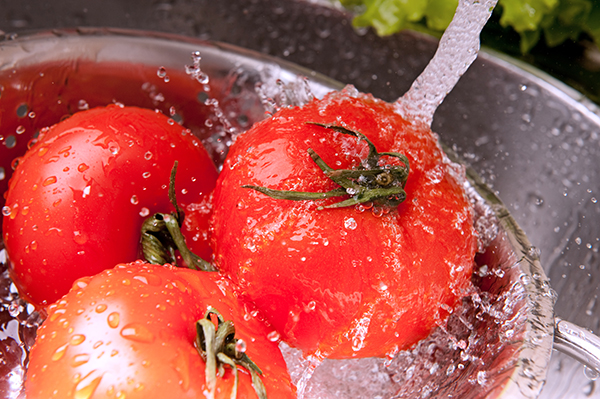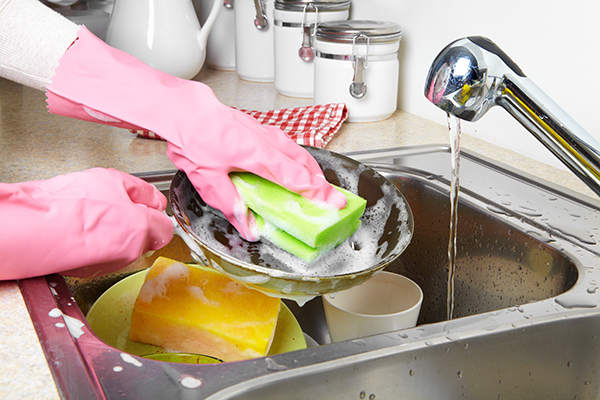Temperature Checks: Safeguarding Your Foodservice Business with Every Delivery
There is no mistake that for those of us in the Midwest, and much of the US, we are in the middle of summer, when the temperatures swell to the high-90s and low-100s. Along with the sweltering heat, comes a reminder about the importance of keeping cold food cold in our operations. Especially as we look at those deliveries that are coming into our operations each week. This receiving process might seem like a routine task, but it plays a vital role in preventing foodborne illnesses and ensuring the overall quality of food served to customers.
Upon receiving a cold food delivery, it is essential to inspect the temperature of each product. Use a calibrated food thermometer to measure the temperature of items such as dairy, meat, poultry, and seafood. Cold foods should be maintained at or below 41°F (5°C) to prevent growth of pathogens. If any items are above this temperature, they should be rejected to avoid potential contamination.
Not only should you be sure your staff check the temperature of the food as it arrives, but they should do so in the proper manner, so it is not contaminated in the process.
- For meat, fish, and poultry, the probe of the thermometer should be inserted directly into the thickest part of the food. For many products, but not all, this usually means the center.
- Live shellfish can be received at an air temperature of 45°F (7°C) and an internal temperature no greater than 50°F (10°C). But it should be cooled to 41°F (5°C) or below within four hours of receiving.
- For any vacuum-packed food or food that is packaged using modified atmosphere packaging (MAP), the thermometer should be inserted between the two packages, or if the package will allow it, it can be folded around the thermometer probe. For some items, for example, bacon that may have two vacuum sealed packaged per box, staff will need to open the case in order to take the temperature properly. Be sure not to puncture the package while taking the temperature.
- Milk and eggs can be received at an air temperature of 45°F (7°C) or lower, but just like shellfish, should be refrigerated at or below 41°F (5°C) upon receiving.
- Frozen foods should all be frozen solid. Look for signs of thawing and refreezing, such as ice crystals in the box, fluids or water stains on the case, or frozen liquids on or in the packages.
If the food you are receiving does not meet the above criteria, reject it and send it back. Make sure staff who inspect these items are empowered to do so. Rejecting any delivery can leave your operation short on supplies; however, be sure the employee who rejects a delivery is not blamed by staff for being the cause of the problem. Remember, if you have a true food safety culture, nothing is so important that it cannot be done safely.
… when food is delivered at the correct temperature, not only does it ensure a safe project, it preserves its taste, texture, and nutritional value.
Temperature checks also help maintain the quality of the food. When food is delivered at the correct temperature, not only does it ensure a safe project, it preserves its taste, texture, and nutritional value. For instance, if ice cream is delivered above freezing temperature, it may refreeze in the freezer, resulting in an undesirable texture. Similarly, meat and poultry products that are not kept at the right temperature leads to waste and loss of profit. Ensuring that food is delivered at the correct temperature helps maintain the quality and extends the shelf life of the products.
When customers trust that a restaurant or foodservice operation prioritizes safety and quality, they are more likely to return and recommend the establishment to others. Regular temperature checks of deliveries help build this trust, as customers can be confident they are consuming safe and high-quality food. This simple yet effective step can prevent foodborne illnesses, reduce waste, minimize financial losses, and enhance customer satisfaction. Risk Nothing.
READ MORE POSTS
Welcome to National Food Safety Education Month!
In September of each year, we not only have the opportunity to celebrate Labor Day, but we also welcome National Food Safety Education Month! It is this time of the year when it is important to remember that Foodborne illnesses are still a major concern in the United States, although I am guessing many Americans don’t think about the safety of the food they eat as they go throughout their daily lives. The statistics show one in every six Americans will suffer from a foodborne illness each year, for a total of about 48 million cases each year.
Protecting Fresh Produce Post-Harvest, Integral to Safe Food
During the height of the summer, at least in the Midwest, farmers markets are in full swing and fresh produce is plentiful. Every backyard gardener is reaping the benefits of their work, with bountiful harvests of tomatoes and cucumbers. Everyone seems to have a neighbor who is trying to pawn off his or her over-production of cucumbers or summer squash during this time of year. When picking up that produce at the farmer’s market or from your neighbor down the street, have you ever given any thought to the microbial safety of it? Honestly, even in my position, it certainly is NOT the first thing that comes to my mind. But, earlier this month, I came across a news story out of Wisconsin discussing a Salmonella outbreak associated with shelled peas sold at a local farmers market. Who would have thought shelled peas would be impacted? The story noted, and it served as a great reminder, that most outbreaks associated with Salmonella in produce are due to mistakes made in handling or transportation of produce after harvesting.
Properly Cleaning and Sanitizing: The Right Chemical Mix to Maintain Ultimate Effectiveness
A few weeks ago, my family and I had the pleasure of setting sail on a cruise vacation. It is truly one of the only ways that I find that I am able to unplug from work and relax for a small spell. However, as I walked around the ship in our post-COVID world, I couldn’t help but admire all the extra cleaning steps the staff were undertaking to keep us all as safe as possible while in the middle of the ocean with 3,000 other vacationers. All of this cleaning and sanitizing had me thinking about how we each clean and sanitize our own operations and which chemicals we chose to use.
Proper Cooking Temperature: A Basic Food Safety Measure
Each summer, we see an increase in the incidence of foodborne illnesses. Perhaps this is because of the warmer temperatures making temperature control for Time/Temperature Control for Safety (TCS) food more difficult or perhaps it is the increased amount of people who are barbequing this time of year – it is National Picnic Month, after all!










